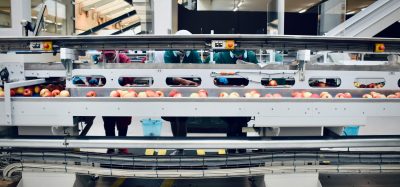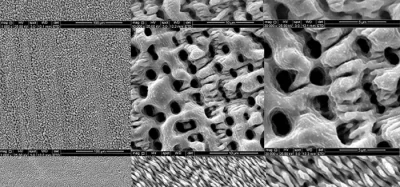Mirror, mirror on the wall, who’s the most hygienic of them all?
- Like
- Digg
- Del
- Tumblr
- VKontakte
- Buffer
- Love This
- Odnoklassniki
- Meneame
- Blogger
- Amazon
- Yahoo Mail
- Gmail
- AOL
- Newsvine
- HackerNews
- Evernote
- MySpace
- Mail.ru
- Viadeo
- Line
- Comments
- Yummly
- SMS
- Viber
- Telegram
- Subscribe
- Skype
- Facebook Messenger
- Kakao
- LiveJournal
- Yammer
- Edgar
- Fintel
- Mix
- Instapaper
- Copy Link
Posted: 27 November 2009 | Dr. John Holah, Head of Food Hygiene, Campden BRI | 1 comment
Whilst we believe that food safety is a major issue in the food industry, it rarely features in the press; hygiene in the healthcare sector, particularly related to the control of healthcare acquired infections (HAI’s), is, however, rarely out of the media. With the media attention focused on healthcare hygiene, has the clinical sector developed technologies that could be of benefit to the food industry? Who is the most hygienic of all?
Whilst we believe that food safety is a major issue in the food industry, it rarely features in the press; hygiene in the healthcare sector, particularly related to the control of healthcare acquired infections (HAI’s), is, however, rarely out of the media. With the media attention focused on healthcare hygiene, has the clinical sector developed technologies that could be of benefit to the food industry? Who is the most hygienic of all?
Whilst we believe that food safety is a major issue in the food industry, it rarely features in the press; hygiene in the healthcare sector, particularly related to the control of healthcare acquired infections (HAI’s), is, however, rarely out of the media. With the media attention focused on healthcare hygiene, has the clinical sector developed technologies that could be of benefit to the food industry? Who is the most hygienic of all?
The following observations are from a brief examination of a comparison of the food and clinical sectors and, other than European based legislation, the situation is most likely to vary between countries. This then is from a primarily UK based perspective. Firstly we must look at infrastructure. What legislation or guidance exists that the two sectors must or should follow to ensure hygienic buildings, equipment and personnel?
The food industry is well controlled with respect to legislation with the hygiene of foodstuffs Regulation (EC 852/2004) dictating minimum requirements for buildings and their finishes and the Machinery Safety Directive (89/392/EC) dictating that equipment must be hygienic to comply with CE marking and thus be fit for sale in Europe. In addition, food contact surfaces must comply with the Food Contact Surface Regulations (1935/2004/EC). Further to this, hygienic design guidance is available at a European level either via European standards (e.g. hygienic design standard EN 1672-2) or independent advice (e.g. EHEDG Guidelines). Equipment can even be certified as hygienic (www.ehedg.org). As an organisation, Campden BRI offers extensive support to food manufacturers in the design and construction of food production premises – to maximise hygiene and minimise the effort required to maintain good hygiene (www.campden.co.uk/services/food-hygiene.htm).
However, we can find no European legislative or guidance documents for the hygienic design of a hospital, the equipment it contains and the instruments and surfaces coming into direct contact with the patient. Can this really be true; is it conceivable that clinical environments are not designed to be cleaned!
At a national level within the UK, the Department of Health Estates and Facilities (www.dh.gov.uk) produces guidance for NHS organisations and individuals with an interest in land, property, equipment and facilities. Guidance is published as Health Building Notes (HBN), which provide advice to project teams designing and planning new buildings and adapting/extending existing buildings and Health Technical Memoranda (HTM), giving guidance for the design, installation and running of specialised building service systems.
With respect to the good hygienic practices that are necessary to maintain the infrastructure, EC 852/2004 provides general advice that appears to be missing at a legislative level for the clinical sector. When it comes to guidance, however, both sectors are amply covered with respect to hand and personnel hygiene and cleaning and disinfection. Indeed the hospital sector seems to have gained a lead over the food industry in introducing personnel based alcohol hand rubs, which allow staff to perform instant hand hygiene practices anywhere on the ward, and wholeroom disinfection practices to decontaminate bed units between patients.
The food industry would counter this with standards to verify the performance of GHP’s. For example the UK NHS predominantly uses visible cleanliness to monitor cleaning, even in operating theatres, whilst the food industry would virtually always use microbiological or ATP measurements beyond visible cleanliness. The concept of environmental disinfection is universal in the food industry but is considered by many to be unnecessary in the clinical setting.
But who decides the suitability of GHP’s and techniques used for the control of contamination? In the food industry, collectively, food manufacturers, retailers and research bodies like Campden BRI all agree appropriate strategies which are then published as guidance. In the UK the NHS Rapid Review Panel (www.hpa.org.uk) grades new technologies to control health care associated infections. Technologies with the highest grading are then supported and introduced into the NHS via showcase hospitals.
Finally, once standards are set who audits against them? In both the food and hospital sectors, there is likely to be government inspectors who have direct responsibility for standards and their enforcement. For example, in the UK Environmental Health officers and the Care Quality Commission (www.cqc.org.uk) undertake these roles, respectively. However, there appears to be no equivalent to the retail audit (e.g. BRC or IFS) in the clinical sector!
As a conclusion, whilst the clinical arena may be more advanced in wholeroom disinfection and hand hygiene, we in the food industry can probably still claim to be the most hygienic of them all!








